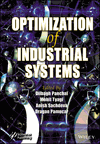Programming of 6 Axis Articulated Robot for Industrial Applications
Summary
Robots are being used as a material handling system and they form a vital part of a flexible manufacturing system. Robots are very useful for work requiring high accuracy and repeatability. Articulated robots can be as straightforward as a two axis structure or complex with at least ten axes and are typically powered by servo motors. Most industrial robots have four to six axes, with six axes being the most well-known. The aim of this study is to maximize the machine utilization by increasing machine flexibility to increase the level of automation/flexibility. This will ultimately result in reduced operation costs. The programs have been developed for transferring parts to the conveyor, pick-place, and stacking operation for the Aristo 6 Axis Robot using teach mode programming. An optimized robotic movement has also been selected. namely linear point to point movement, spline point to point movement, and corresponding point to point joint movement by observing the possible drawbacks of each mode and subsequently possible effects on the total operational time. Finally, the effect of using the ARISTO Robot for the stacking purpose instead of the operator will be studied by developing the simulation models for both cases on the ARENA simulation software.



